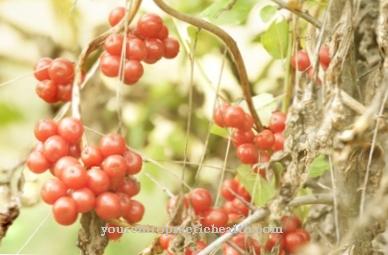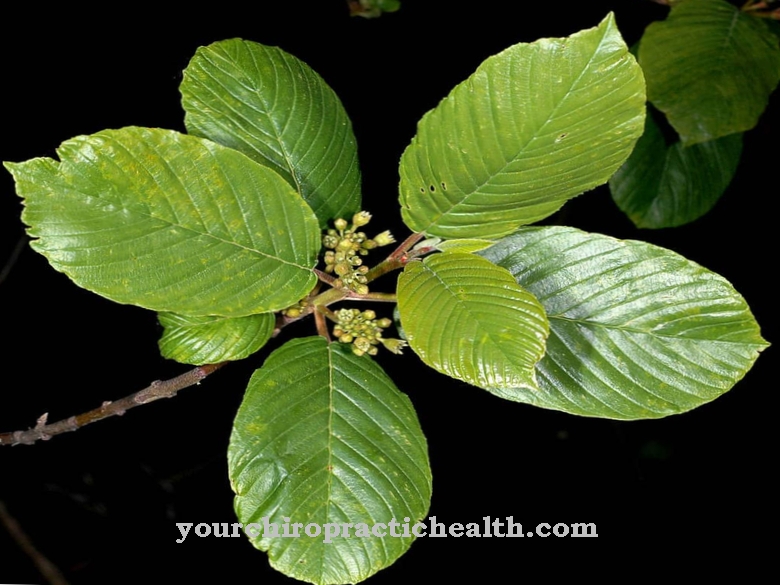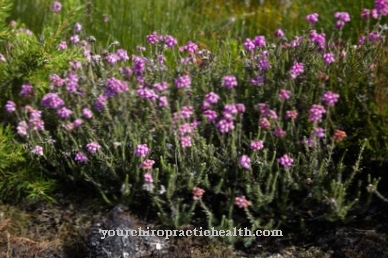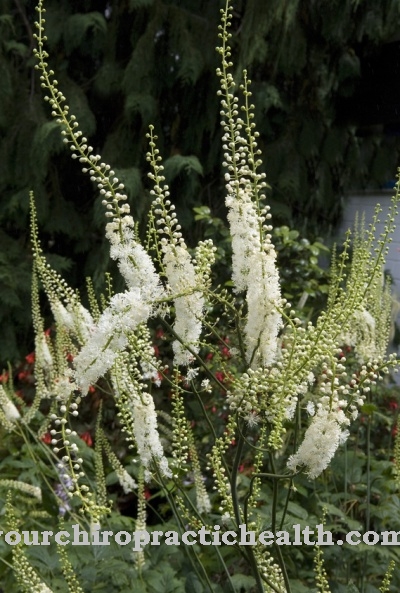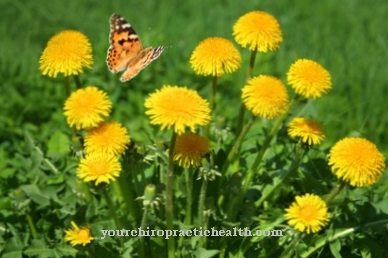In the elm it is a tree that is becoming increasingly rare. The bark is used as a traditional remedy.
Occurrence & cultivation of the elm

The elm is one of the deciduous evergreen trees and shrubs. It reaches heights of growth of up to 35 meters and can reach a great age. Over the years, the tree's smooth bark becomes increasingly cracked. The elm leaves have a pointed, oval shape. They are sawn on their edges. One half of the leaves is typically larger than the other. The flowers, which occur in clusters, thrive in March and April. Whitish winged fruits emerge from the blossoms of the elms.
The 45 elm species are native to the entire northern hemisphere. The elm's preferred habitats include river banks, forest edges, alluvial forests, slopes and parks. In Central Europe, however, the tree is threatened with extinction. Field elm and mountain elm are particularly at risk. As a result of the infestation with a fungus that is transmitted by the elm splint beetle, the trees die.
Effect & application
In naturopathy, the bark of the elm is used for medicinal purposes. But the leaves are also used. Effective ingredients in the tree are tannins such as phlobaphene and tannic acid, mucilage, flavonoids, bitter substances and resin. Due to the endangerment situation of the elm, the bark must not be removed from a wild tree. It is better to purchase them for use in stores.
Elm bark tea is considered the most traditional form of presentation. To prepare this accordingly, one to two teaspoons of the elm bark are put in a saucepan and a cup of cold water is poured over it. The user then lets this mixture boil. After straining, the elm bark tea can be drunk once or twice a day. It is also suitable for gargling or as an addition to a bath.
Tincture is another way of presenting it. You can also make it yourself by filling the elm bark into a screw-top jar and pouring it with alcohol or double grain. After all parts of the bark are covered with liquid, the sealed mixture rests for about two to six weeks in the jar, which should be in a warm storage place. This is followed by straining and decanting into a bottle with a dark color. Three times a day, 10 to 50 drops of the elm bark tincture can be taken.
If the concentration is too high, it can be diluted with water. Elm tea and tincture are also suitable for external use. The affected areas of the skin are treated with washes, baths or compresses. The elm is also used as an elm as part of the Bach flower therapy. It is considered helpful when a person believes they are no longer doing their job.
Importance for health, treatment & prevention
The elm was already valued as a therapeutic agent in ancient times. The Greek doctor Pedanios Dioscurides, who lived in the 1st century AD, praised the wound-healing and contracting effects of the elm in his book on medicinal plants, "Materia medica". In the Middle Ages, Hildegard von Bingen (1098-1179) recommended the herbal remedy for gout. The sufferer should set fire to the wood of the tree and warm up on it. In addition, Hildegard von Bingen attributed a positive effect against malignancy to the elm bark.
In folk medicine, the elm is primarily used against abscesses, boils and chronic rashes. It is also possible to treat poorly healing wounds with compresses or washing. Washing with the elm will result in faster scarring. Elm bark is also considered useful against rheumatic diseases.
One of the positive effects of the elm is that it has anti-inflammatory, diuretic, blood-purifying, tonic, wound-healing and astringent properties. Elm bark is also an effective means of treating hemorrhoids. It is used as a bath additive. The medicinal plant is also helpful in the treatment of inflammation of the mouth and throat region and against intestinal inflammation. Elm bark can also be used effectively against diarrhea. The herbal remedy has even proven to be helpful in veterinary medicine. This is especially true when treating cats. The water-driving properties of the elm are also positive, which in turn affects the accumulation of water in the body. Other areas of application for the elm are gastritis and eczema.
Side effects are hardly to be feared when using the elm. However, the elm bark must not be taken at the same time with other drugs. So it is possible that the ingredients have an inhibiting effect on the effectiveness of the drug. It is therefore advisable to keep an interval of at least 60 minutes when taking. If anything is unclear, a doctor should be consulted.

